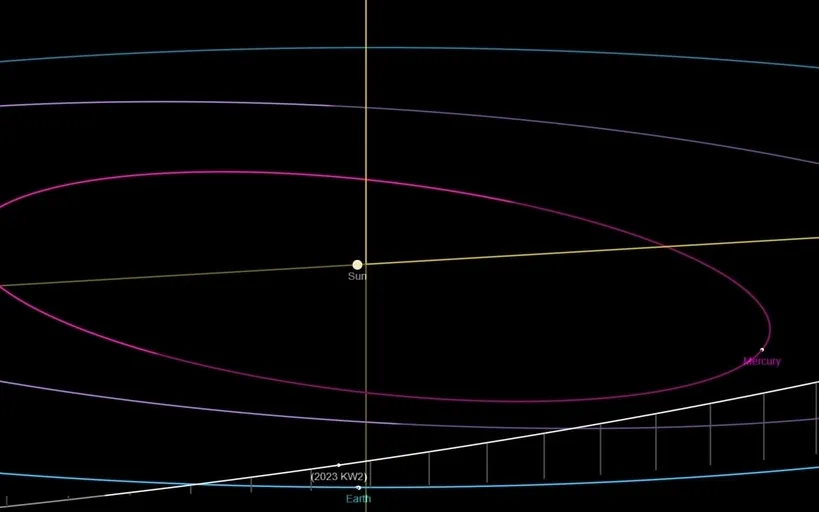NASA on High Alert as Giant 210-Foot Asteroid Approaches Earth
NASA has implemented a new impact monitoring system, known as Sentry-II, to assess the risk of Near-Earth Objects. This algorithm enables NASA to track the asteroid’s orbital path using infrared data and predict its trajectory for years to come. To date, various technological instruments have discovered almost 28,000 near-Earth asteroids by monitoring objects in the sky.
Using this advanced technology, NASA has now revealed details of a massive asteroid that is set to make its closest approach to Earth.
Asteroid 2023 KW2 information
Scientists have been fascinated by asteroid 2023 KW2 because of its massive size. According to NASA, the asteroid is estimated to be about 210 feet in diameter, which is about the size of a large airplane, possibly a Boeing 747! When asteroid 2023 KW2 hits a planet, its gravity can cause massive destruction, especially if it lands in a densely populated area.
According to the space agency, Asteroid 2023 KW2 will make its closest approach to Earth tomorrow, June 6, at a distance of 4.5 million kilometers. As a result, it was added to NASA’s list of close approaches. While this distance may seem large, it is relatively small in astronomical terms considering the asteroid’s massive size.
In fact, asteroid 2023 KW2 is already heading towards Earth at a blazing speed of 36,350 kilometers per hour!
Asteroid collision in the past
Although asteroids have passed safely close to Earth in recent months, this does not mean that a collision with the planet is not possible. In fact, it was an asteroid that almost 65 million years ago caused the extinction of one of the largest species on the planet – the dinosaurs.
According to Alvarez’s hypothesis, the extinction was caused by a huge asteroid that crashed into the earth more than 65 million years ago. The asteroid reshaped the planet and is likely the cause that started the extinction of the dinosaurs. Scientists even found an asteroid impact crater in Chicxulub near Mexico’s Yucatan Peninsula.
And a few years ago there was the accident in Chelyabinsk and much earlier the accident in Tunguska. It was the largest asteroid to hit Earth about two billion years ago, leaving behind the Vredefort crater near Johannesburg.
NASA observes these asteroids by examining data collected by various telescopes and observatories, such as Pan-STARRS, the Catalina Sky Survey, and the NEOWISE Telescope. NASA also has a NEO Surveyor mission planned for launch in 2026 to get more detailed information on the new orbit.




